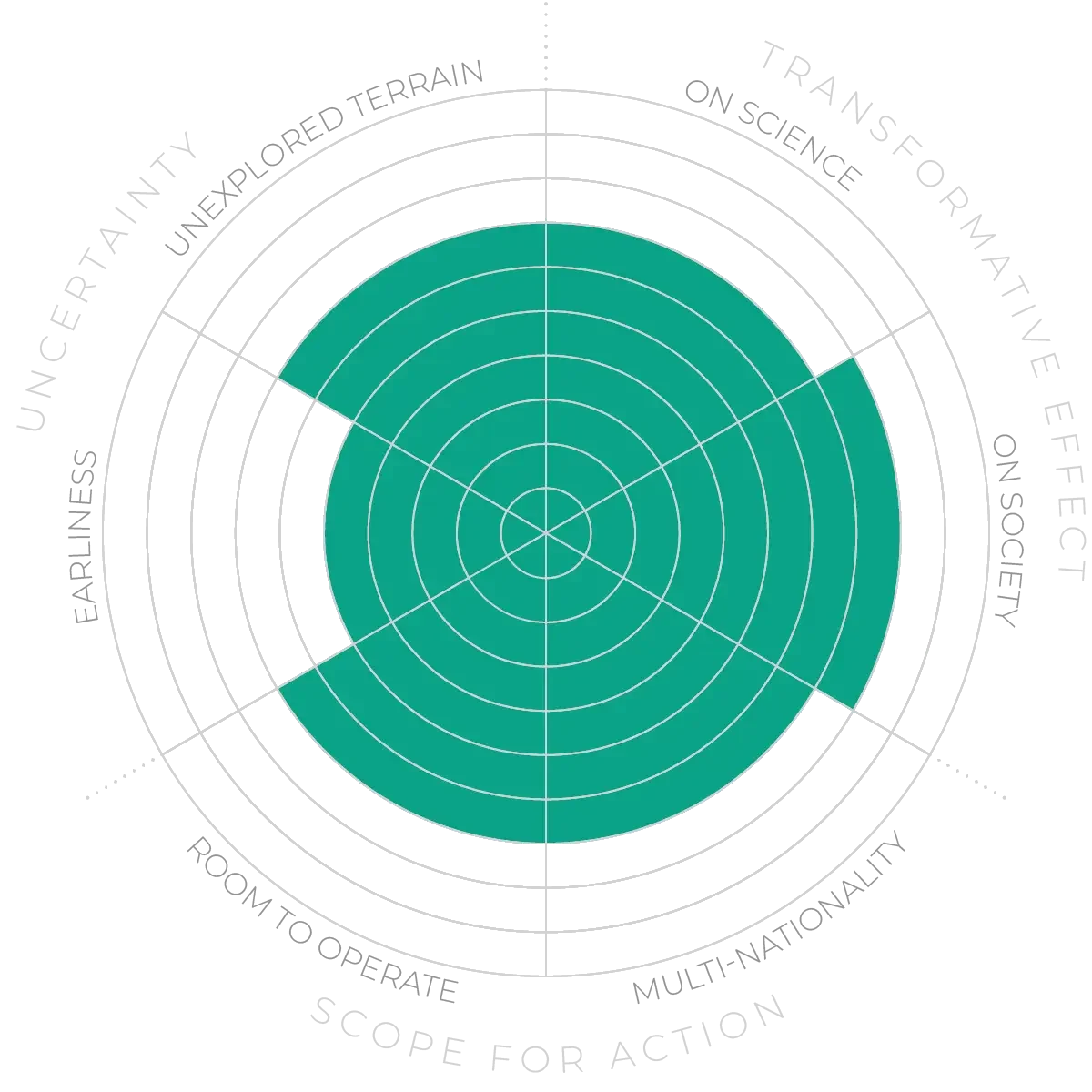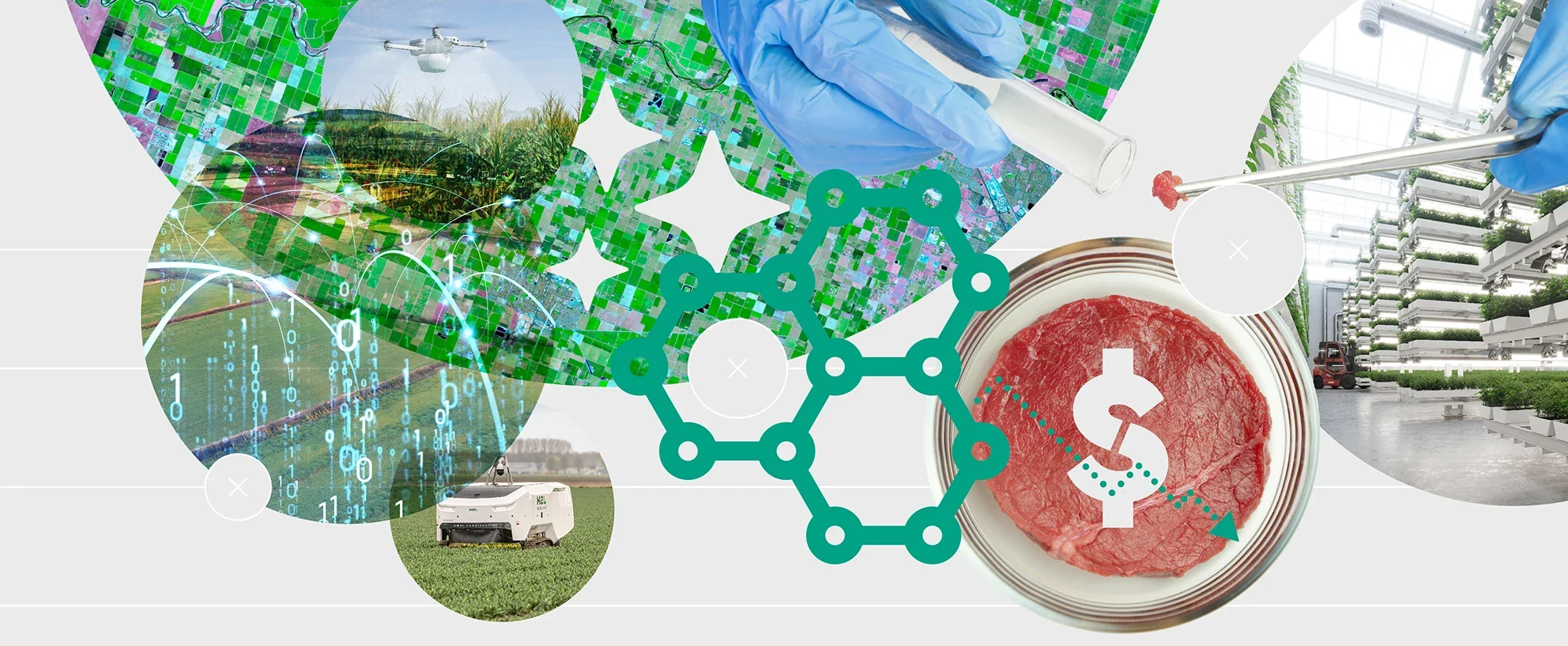Future Horizons:
10-yearhorizon
Farming technologies create new processes for food production
25-yearhorizon
Nanotech and biotech provide foundation for efficient farming
One involves incorporating automation, AI and other novel technologies into traditional forms of agriculture.31 For example, tools like deep learning can accurately identify the presence of weeds and signs of disease from drone footage, enabling targeted intervention32 and decreasing unnecessary pesticide use.33 Similarly, engineered plant nanosensors and portable Raman spectroscopy could potentially detect stresses and track the health of crops and soil.34
Such high-tech approaches to traditional farming can be complemented by the use of agro-ecological tools35 such as microbe-based bespoke fertilisers,36 evidence-based crop choice and rotations.
Precision fermentation with engineered microorganisms can provide nutrient sources and improvers for food products such as cultured meat, improving texture and palatability and helping move towards viable large-scale production.37 Microbes and enzymes are already being used as factories that produce fats and proteins for nutrition products.38
The controlled release and targeted delivery of fertiliser ingredients manufactured at the nanoscale may also improve sustainability by ensuring more efficient use of nutrients.39 Combining these approaches with “climate-smart agriculture”, an acknowledgement of the need to take changing climatic conditions and their increasing variability into account,40 will be especially important in developing economies, where farms often lack resilience.41
Vertical farming, in which crops are grown indoors, close to population centres and under artificial light, could have a number of significant benefits. These include reduced food miles, reduced water use (watering systems are closed) and cuts in chemical pollution from fertilisers.42 Making vertical farming economically viable remains challenging, however.43
Reimagining farming - Anticipation Scores
The Anticipation Potential of a research field is determined by the capacity for impactful action in the present, considering possible future transformative breakthroughs in a field over a 25-year outlook. A field with a high Anticipation Potential, therefore, combines the potential range of future transformative possibilities engendered by a research area with a wide field of opportunities for action in the present. We asked researchers in the field to anticipate:
- The uncertainty related to future science breakthroughs in the field
- The transformative effect anticipated breakthroughs may have on research and society
- The scope for action in the present in relation to anticipated breakthroughs.
This chart represents a summary of their responses to each of these elements, which when combined, provide the Anticipation Potential for the topic. See methodology for more information.



